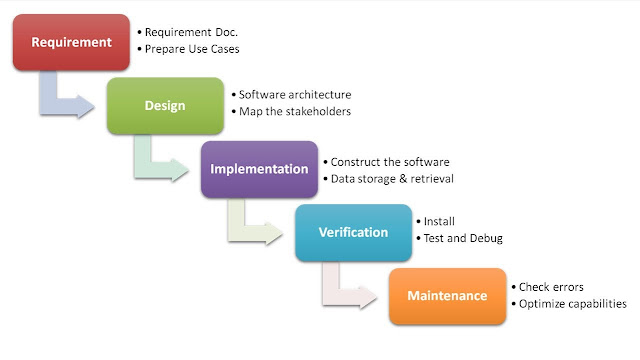The Waterfall Method:
The waterfall method or approach is one of the most famous project management models in existence. At its simplest, the implication is that tasks appear and are completed linearly.
- Schedule/timelines that stretch out for months or years and imply substantial prescience
- Resources available and predictable for the duration of the project
- Quality systems in place
- Team players understand their roles
Benefits of the Waterfall Method
Probably the greatest single benefit of the waterfall method is that it is easy to understand. Unfortunately, understanding doesn’t always lend itself to ease of implementation. However, the models are so compelling, nearly every staged-gate approach is a variant on the waterfall approach.
Defects of the Waterfall Method
The waterfall method is an example of what we call “crystalline” project management. The plan is rigid and team learning and investigating how to make the product is not built into the system. Often, we over-optimistically project plans where the uncertainties will be addressed when we awaken to them, often too late. Additionally, if the delivery date is years out, we see project managers trying to forecast task completions when they have no way of knowing if their prognostications stand a chance of completion. The unrealistic planning horizon provides no benefits to the supplier or customer and may lead to customer frustration and lost business.
Application of Scrum to the Waterfall Method
Before we apply scrum to the waterfall method, we should establish the scrum duration. Most commonly, we see fortnight schedules and month schedules. As we now know, we call these schedules “sprints.” The sprint method provides us with a short enough duration–that is to say a planning horizon—that our forecasting
accuracy has a much lower risk. Once we have established the sprint duration, we can build these periods into a waterfall approach. Other parts of the enterprise may not be using the scrum approach—they may be more comfortable with the waterfall method. By mixing the two models, we allow ourselves the best of both worlds while meeting corporate expectations. Since scrum reporting occurs more frequently than what is typical with the waterfall approach, we lose nothing in our reporting capability. We lose nothing in terms of quality because we have been holding daily scrum meetings and assessing our quality as we proceed through the project. Even better, the budget remains completely under control, thanks to the daily review.
Benefits of Applying Scrum
We have noted several times the increased tempo expected when switching to the scrum approach. Our experience suggests that this is one of the greatest benefits to be achieved by using this agile method regardless of the style of project management. The reduced risk caused by the frequent meetings, including the sprint meeting at the end of the period, also provides a salutary effect. Planning and forecasting never exceed a planning horizon that can be managed by the team.
We have also seen improved interplay among team members. In general, no one is allowed to be absent from a scrum meeting. All team members listen to all other team members when answering the three questions. Any break in the time-box must have the acquiescence of all team members in order to occur. In that manner, team members are less resentful of the meetings, and improved communication occurs because everybody hears everybody else on a daily basis. Furthermore, all team members will attend the review and sprint planning meeting, which likewise has a positive effect on communications.

Comments
Post a Comment